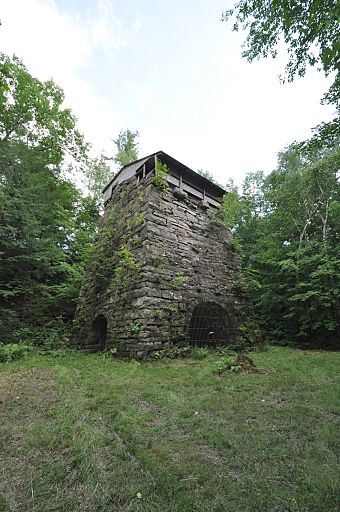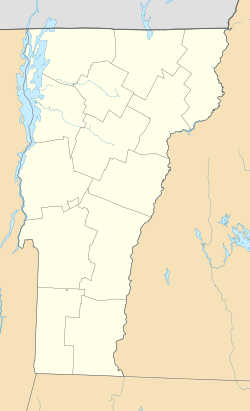Forest Dale Iron Furnace facts for kids
Quick facts for kids |
|
|
Forestdale Iron Furnace
|
|
 |
|
| Location | VT 73 and Furnace Rd., Brandon, Vermont |
|---|---|
| Area | 9.8 acres (4.0 ha) |
| Built | 1810 |
| Built by | Smith, John |
| NRHP reference No. | 74000254 |
| Added to NRHP | June 13, 1974 |
The Forestdale Iron Furnace was a special factory that made iron a long time ago. It was built in the 1800s in Brandon, Vermont. This old factory worked from 1810 to 1855. It closed because newer factories could make iron better and cheaper. Today, it is mostly old ruins and the main furnace stack. In 1974, it was added to the National Register of Historic Places. This means it is an important historical site. You can find a sign about it on Vermont Route 73.
Contents
What is the Forestdale Iron Furnace?
The Forestdale Iron Furnace is in eastern Brandon, Vermont. It is on the north side of Vermont Route 73. The area is now mostly a flat, grassy field. The most important part you can still see is the furnace stack. This stack is hidden in the woods just north of the field. You can reach it by following a path from Furnace Road.
The Furnace Stack and Its Parts
The furnace stack is a tall structure made of stone and brick. It is about 60 feet (18 meters) high. At its base, it is 32 feet (9.8 meters) wide and square. It gets narrower as it goes up. Three sides of the stack have large arched openings at ground level. These openings are about 8 feet (2.4 meters) wide at the front. They get smaller as they go deeper into the structure. Inside, there is a main room lined with brick.
Other Features of the Site
Other parts of the old factory site include a raceway and a wheelpit. A raceway is like a channel that carried water. The water came from the nearby Neshobe River. This water helped power the factory. You can also see some stone walls that held up parts of the factory. The ground is covered with many stones. There are also stone foundations from other buildings that used to be there.
History of the Forestdale Iron Furnace
The Forestdale Iron Furnace was started in 1810. A man named John Smith from Leicester, Vermont built it. The factory was open for many years. It had different names and owners over time. It finally closed in 1855.
How Iron Was Made Here
Workers at the furnace used a type of iron ore called brown hematite. This ore was dug up from nearby areas. They also used charcoal made from local wood. They would heat the ore and charcoal in the furnace. This process made iron. The iron was then shaped into useful things. These included stoves, tools for farming, and other metal parts.
Why the Furnace Closed Down
The Forestdale Iron Furnace was not very good at making iron. It was not as efficient as other factories. Also, it was hard to sell the iron because the roads were not good. It was difficult to move the products to other towns. Newer and better factories, especially in Troy, New York, made iron more cheaply. These new factories also had better ways to transport their products. Because of this, the Forestdale Iron Furnace could not compete. It was shut down in 1855. In 1974, the site was given to the state of Vermont to protect its history.



